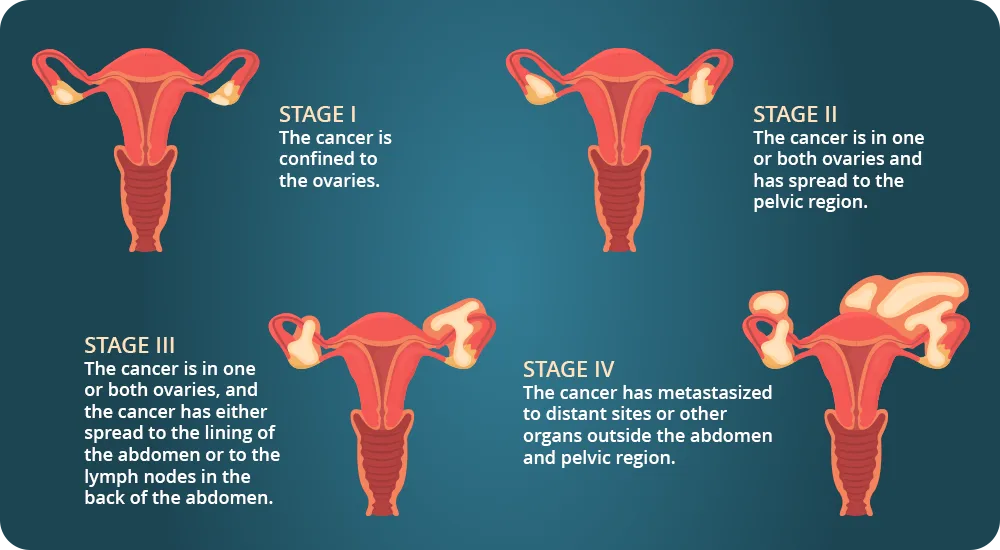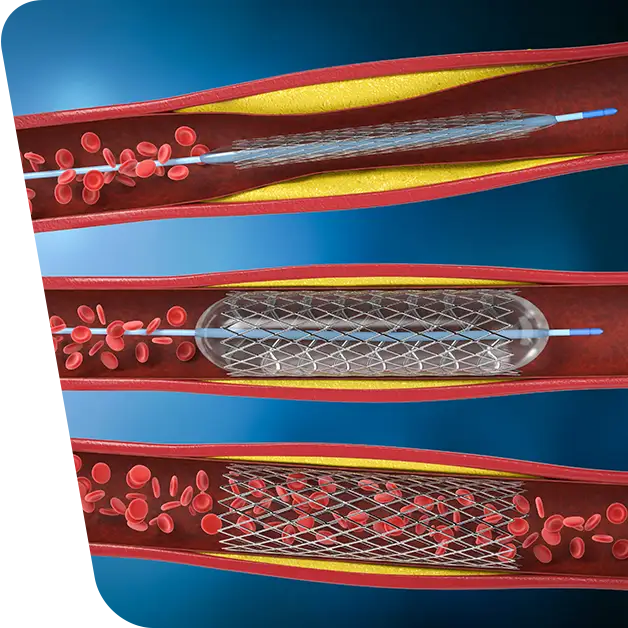Although ovarian cancer is one of the most common cancers in women, it often goes undetected until it is detected at stage 3 or 4, when it is very difficult to treat. Regular gynaecological screening for early detection of any defects and information about a woman’s reproductive health could help to avoid this high-impact diagnosis.
Venart Clinic specializes in gynecological surgery and gynecological oncology.
Thanks to highly experienced doctors and innovative medical techniques, we ensure an operating experience at the highest quality standards, with exceptional long-term results in the treatment of gynaecological disorders. For more details visit our gynaecological oncology department.
Table of contents
ToggleWhat is ovarian cancer?
Ovarian cancer is a type of cancer that occurs on one or both ovaries, resulting from cancer cells that have developed abnormally, grown uncontrollably and have the ability to invade other parts of the body.

What are the early signs and how do we detect ovarian cancer?
Ovarian cancer often starts symptomatically, but these are often vague and end up being overlooked. So only about 20% of cases are detected at an early stage. Screening tests are carried out to be able to detect cancer before the patient shows symptoms.
Early signs in ovarian cancer include:
- Bloating,
- Abdominal pressure or pain,
- Inability or difficulty eating,
- Rapid feeling of fullness,
- Increased frequency of urination,
- Increased urge to urinate.
Other symptoms that may indicate ovarian cancer?
- Fatigue,
- Indigestion,
- Acid reflux or heartburn,
- Constipation,
- Back pain,
- Irregular periods
- Pain during sexual intercourse,
- Dermatomyositis (a rare inflammatory disease that can cause skin rashes, muscle weakness and sore muscles).
Most of these symptoms are common and can occur for many reasons and lots of women have some of these problems at some time without having ovarian cancer. On top of that, these types of symptoms are often temporary and respond to basic treatments in most cases.
Thus, if it is observed that the above symptoms persist or become more severe and do not subside with treatment, it would be advisable to also consider the possibility of cancer. Symptoms usually become more severe as the tumour grows. At this point, the cancer has also spread outside the ovaries, making it more difficult to treat effectively.
Therefore, although there is no specific screening test to detect it, there are some methods that can help us assess the risk of ovarian cancer and detect it at an early stage when it can be successfully treated. How can we reduce the risk of endometrial cancer?
What treatment options are there for ovarian cancer?
Treatment for ovarian cancer depends on the stage and how far the cancer has spread. It requires a team of doctors who will establish a treatment plan based on the patient’s needs and situation. Most likely, this plan will include two or more of the following:
- Chemotherapy,
- Surgery,
- Targeted therapy,
- Hormone therapy.
The main method of treating ovarian cancer is surgery. The aim of the operation is to remove the tumour, but it is often necessary to perform a hysterectomy, which involves the complete removal of the uterus. At certain stages, removal of both the ovaries and fallopian tubes, nearby lymph nodes and other pelvic tissues is recommended.
Targeted therapies, such as chemotherapy, attack cancer cells while doing little damage to normal cells in the body.
Depending on the specifics of ovarian cancer, the survival rate following stage 4 cancer ranges from 17% for an invasive epithelial tumour to 69% for a germ cell cancer. It is therefore important at the annual gynaecological check-up, especially in the presence of suggestive symptoms, to have one of the above tests performed to exclude the risk of ovarian cancer.
The annual Pap smear does not prevent the possibility of developing a tumour, so it detects abnormalities only in the cells of the cervix.
How to stage ovarian cancer
Stage 1
Stage 1 ovarian cancer has three substages:
- The cancer is confined or localized to one ovary,
- Cancer is in both ovaries,
- There are also cancer cells outside the ovary.
Stage 2
In stage 2, the tumor has spread to other pelvic structures. It has two substages:
- Ovarian cancer has spread to the uterus or fallopian tubes,
- Ovarian cancer has spread to the bladder or rectum.
Stage 3
Stage 3 ovarian cancer has three substage:
- The cancer has spread microscopically beyond the pelvis to the lining of the abdomen and lymph nodes in the abdomen,
- The cancer cells have spread beyond the pelvis to the lining of the abdomen and are visible to the naked eye, but measure less than 2 cm,
- Cancer deposits of at least 3/4 cm are seen on the abdomen or outside the spleen or liver. However, the cancer is not in the spleen or liver.
Stage 4
In stage 4, the tumor has metastasized or spread beyond the pelvis, abdomen and lymph nodes to the liver or lungs. There are two substages:
- 4A, cancer cells are in the fluid around the lungs,
- 4B, the most advanced stage, the cells have reached inside the spleen or liver or even other distant organs such as the skin or brain.
The risk of developing this type of cancer has an important genetic determinism, so CA 125 tumour marker testing can be used if patients are suspected of having ovarian cancer. Also, although they may be considered trivial, symptoms should be reported to your doctor to rule out the possibility of ovarian cancer by one of the following tests:
- Pelvic examination to detect any abnormality occurring in the pelvic organ structure,
- Transvaginal ultrasound – a type of imaging test used to visualise the reproductive organs, including the ovaries. It can also detect malignancy of tumours,
- Abdominal CT,
- Biopsy – often used after an imaging test to determine whether the mass formed on the ovary is cancerous or non-cancerous. If the tumour is benign, it is called an ovarian cyst and in most cases is not dangerous.







